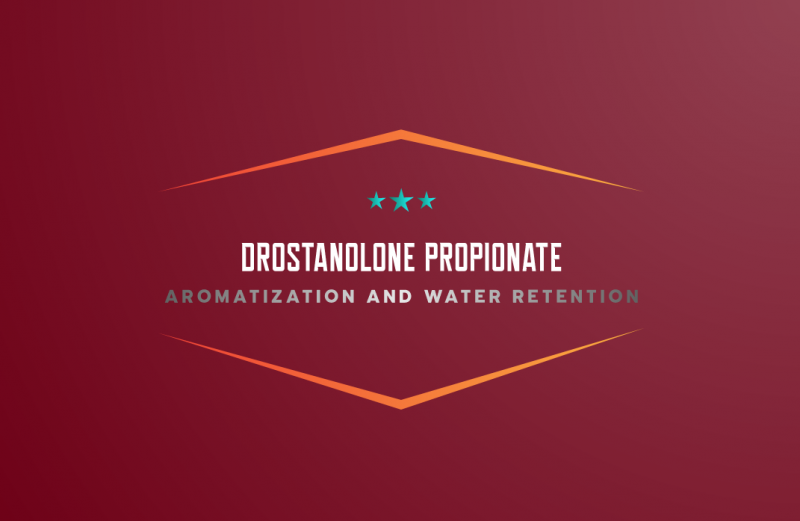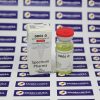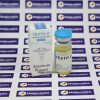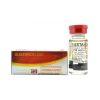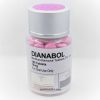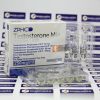The present article explores the key features of Drostanolone Propionate (DP), a widely used anabolic androgenic steroid (AAS) in the bodybuilding community. The piece provides a deep dive into its lack of aromatization, its impact on water retention, and its corresponding implications on muscle definition and vascularity. The article also identifies the popular bodybuilding slang names for DP.
Drostanolone Propionate, known in the bodybuilding community by the monikers Masteron, Mastabol, and Metormon, has become increasingly popular in anabolic androgenic steroid (AAS) cycles for bodybuilders and athletes alike. Its unique properties, including its resistance to aromatization and minimal impact on water retention, make it a go-to steroid in many bodybuilding circles.
DP is a derivative of dihydrotestosterone (DHT), exhibiting strong androgenic properties and moderate anabolic effects. As a DHT-derived AAS, it has a few notable features that distinguish it from others in its class. A critical property that often attracts users is its inability to convert into estrogen – a process known as aromatization.
Curbing Aromatization: The Role of Drostanolone Propionate in Estrogenic Side Effect Management
Aromatization refers to the conversion of testosterone into estrogen by the aromatase enzyme, a common side effect observed with many other AAS. Excessive estrogen can lead to numerous adverse side effects, including gynecomastia, fat gain, water retention, and mood swings. Therefore, AAS that resist aromatization, such as DP, are highly sought after in the bodybuilding community. DP’s resistance to aromatization largely eliminates the risk of estrogenic side effects, allowing users to capitalize on its muscle-building effects without the typical estrogen-related concerns.
Drostanolone Propionate, popularly known as Masteron in bodybuilding circles, stands out in anabolic androgenic steroid (AAS) cycles due to its unique properties, particularly its resistance to aromatization. Aromatization is the process through which the body converts androgens, such as testosterone, into estrogens via the action of an enzyme known as aromatase. While this process is a normal part of the body’s hormonal balance, it can become problematic when anabolic steroids are introduced into the system, leading to an elevated level of estrogens. This excessive estrogen can manifest in several undesirable side effects, including but not limited to gynecomastia (enlarged breasts in men), bloating, water retention, and mood swings. However, Masteron, a derivative of dihydrotestosterone (DHT), is known to resist this aromatization process. This property is attributed to its structure: DHT-derived steroids are not substrates for aromatase, meaning they cannot be converted into estrogens. Consequently, when Masteron is included in an AAS cycle, users generally do not have to worry about these estrogen-related side effects. This makes Masteron a popular choice, especially for athletes and bodybuilders who are sensitive to estrogenic side effects. Moreover, the anti-estrogenic properties of Masteron make it an appealing option during cutting phases. A common aim of cutting is to achieve a lean, well-defined physique. As Masteron does not lead to water retention—a common effect of estrogen—it can assist in maintaining muscle definition and vascularity during the cutting cycle. Nevertheless, it’s essential to understand that while Masteron does not aromatize, it is not entirely free of side effects. Due to its potent androgenic properties, it can trigger side effects such as acne, aggression, and hair loss in individuals predisposed to these conditions. Also, as with all AAS, Masteron can suppress the body’s natural testosterone production, underlining the importance of post-cycle therapy to restore hormonal balance.
To summarize, Masteron’s resistance to aromatization plays a significant role in its popularity within AAS cycles. However, users must approach its use responsibly, considering potential side effects and taking appropriate measures to mitigate these effects, such as incorporating a proper post-cycle therapy.
Mastering the Cycle: Drostanolone Propionate’s Influence on Water Retention
Another salient feature of DP that has sparked its fame in the fitness arena is its minimal impact on water retention. Water retention, or edema, is a common side effect associated with many AAS. It results in the accumulation of fluids in the body’s tissues, obscuring muscle definition and vascularity – undesirable outcomes for bodybuilders aiming for a “cut” or “ripped” look.
Drostanolone Propionate, also known as Masteron in the bodybuilding world, is particularly valued for its minimal influence on water retention. This characteristic is tightly linked to the fact that Masteron does not undergo aromatization – the process in which the body converts testosterone into estrogen via the aromatase enzyme. Estrogen in the body can induce water retention, leading to a bloated appearance and obscuring muscle definition. This can be particularly problematic for bodybuilders, particularly during a cutting cycle, when the aim is to achieve a lean, well-defined physique. The excess water weight not only affects the aesthetics but can also lead to health concerns like high blood pressure. Masteron’s resistance to aromatization means it doesn’t contribute to an increase in estrogen levels, thus significantly reducing the risk of water retention compared to many other anabolic androgenic steroids (AAS). This quality is particularly beneficial for bodybuilders during the “cutting phase,” where the goal is to shed excess body fat and water to accentuate muscle definition and vascularity. Masteron can aid in achieving a “dry” look, which is often sought after in competitive bodybuilding. This “dryness” refers to the lean, hard, and vascular appearance that comes from reduced subcutaneous water retention. Thus, Masteron has become a popular choice in pre-contest cycles and is often combined with other AAS to optimize the drying effect.
However, it’s crucial to understand that while Masteron has a beneficial influence on water retention and can contribute to a more defined physique, it is not without potential side effects. Masteron, being a DHT-derivative, can lead to DHT-related side effects such as acne, hair loss, and aggression in predisposed individuals. As with all AAS, the use of Masteron can also suppress the body’s natural testosterone production, highlighting the need for post-cycle therapy (PCT) to help restore the body’s hormonal balance.
In summary, Masteron’s minimal impact on water retention is one of the key reasons for its popularity in AAS cycles. But as with any substance, its use should be approached with caution and respect, considering potential side effects and the importance of post-cycle therapy. With DP, the story is different. Due to its lack of aromatization, DP leads to less water retention compared to other AAS. This quality can be particularly advantageous during the “cutting phase” of bodybuilding, where the aim is to shed body fat and water to enhance muscle definition and vascularity. As a result, the Masteron, as it’s colloquially known, is often included in pre-contest cycles.
DP, however, is not without its drawbacks. Like all AAS, its use may lead to potential adverse effects. Although it doesn’t aromatize, its potent androgenic properties can result in side effects such as male pattern baldness, acne, and aggression, particularly in users predisposed to these conditions. Additionally, its use can suppress the body’s natural testosterone production, necessitating post-cycle therapy (PCT) to restore hormonal balance.
Conclusion
In conclusion, Drostanolone Propionate, or Masteron, features prominently in AAS cycles due to its unique qualities. Its resistance to aromatization and minimal impact on water retention make it a favored steroid among bodybuilders and athletes, particularly during cutting cycles. However, users should approach its use with caution, considering potential androgenic side effects and the need for post-cycle therapy.
Understanding the mechanics of different AAS, such as DP, is essential for bodybuilders, athletes, and medical professionals alike. As steroid use continues to permeate sports and fitness, providing accurate, comprehensive information about these substances is more important than ever.

